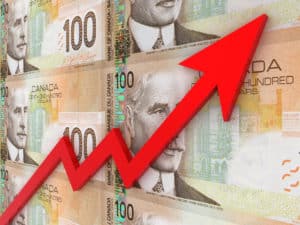Canadians are fortunate to have the Tax-Free Savings Account (TFSA), a one-of-a-kind investment account, where money growth is tax free for a lifetime. Another outstanding feature is that withdrawals are also tax exempt. You need to contribute without exceeding the yearly contribution limits.
Holding cash in a TFSA is okay, although it’s not advisable, because you can’t maximize portfolio gains with it. Accountholders can hold income-producing instruments such as bonds, guaranteed investment certificates (GICs), mutual funds, and exchange-traded funds (ETFs). However, most TFSA investors prefer dividend stocks.
The TFSA’s value increases over the years, so you can use it to build wealth or boost your retirement fund. However, despite the fantastic advantages, do you have a real chance of growing the balance substantially?
Blue-chip stocks
Owning shares of Toronto-Dominion Bank (TSX:TD) and Canadian Natural Resources (TSX:CNQ) ensures uninterrupted income streams, because both are blue-chip stocks. With the $6,500 TFSA contribution limit for 2023, the cumulative contribution room for someone who turned 18 in 2009 or earlier is $88,000.
Let’s assume you qualify or is eligible to invest the maximum and contribution limit and equally allocate it between the TD and CNQ. Please note that we at the Fool prefer a more diversified portfolio and don’t recommend putting such a large sum into only a couple stocks. Instead, we suggest you mix and match a diverse group of dividend-paying stocks to achieve your target yield.
| Company | Price | Dividend Yield | Holding Period / Yrs. | TFSA in 2043 | Tax-Free Profit |
| TD | $79.40 | 4.75% | 20 | $113,136.30 | $69,136.30 |
| CNQ | $69.77 | 4.82% | 20 | $114,712.36 | $70,712.36 |
The computation above is for illustration purposes only and did not consider fees and others to arrive at the final balance and tax-free profit in 20 years. However, the assumption is that all quarterly dividends received were reinvested with the holding period.
Investment takeaways
TD has been paying dividends for 166 years (since 1857) and counting. The $145.21 billion financial institution is the second-largest bank in Canada. Notably, it was the only company that reported revenue and income growth during the 2008 financial crisis.
Big banks are setting aside or raising their provisions for credit losses (PCLs) in anticipation of harsher economic conditions or a recession. The recent collapse of American banks is negatively impacting bank stocks. Still, TD won’t wilt or wither due to the headwinds. Most industry experts agree that Canada’s banking sector is the bedrock of stability.
Canadian Natural Resources boast a top-tier asset base that distinguishes it from industry peers. The $76.73 billion company produces crude oil (light, medium, and primary heavy), bitumen (thermal oil), synthetic crude oil (SCO), natural gas, and natural gas liquids (NGLs).
In 2022, net earnings and cash flows increased 42.7% and 33.9% year over year to $10.9 billion and $19.4 billion. Because of the solid financial position and balance sheet, the board approved two dividend hikes last year (45% combined increase). Management plans to allocate 100% of free cash flow to shareholder returns when net debt goes decreases to $10 billion.
Power of compounding
The power of compounding is always at play, regardless of the investment amount. As long as you maximize your TFSA limit every year and keep reinvesting the quarterly dividends, your balance should grow quickly. Moreover, holding dividend heavyweights TD and CNQ in your TFSA is a definite advantage.








